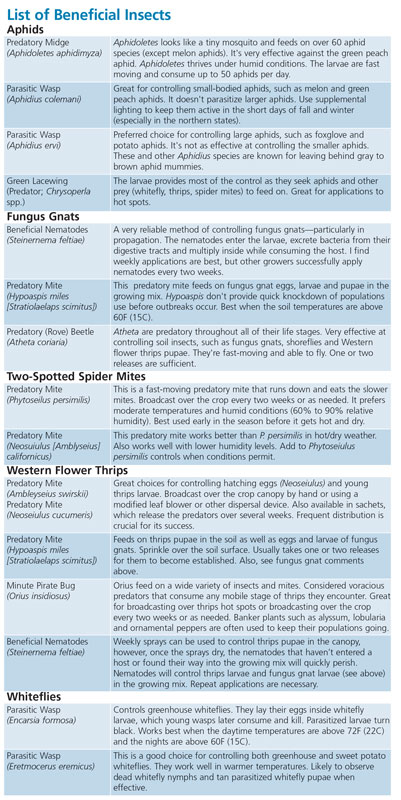4/1/2019
Something Bugging You? Then Get Bugs!
Paul Pilon

Each year, I help numerous growers with their insect and mite management programs. Admittedly, most of these growers are looking to using insecticides and/or miticides to keep their pest problems at bay. However, I wanted to remind you how effective beneficial insects can be.
Many growers are effectively managing their pests using beneficial insects. Like anything in life, there’s a learning curve, but it’s not as steep today as it once was. Thanks in part to the increased interest in biologicals, a better understanding of how to utilize beneficial insects and more growers finding success with them, using beneficial insects can be an effective approach to managing the bad guys.
I can't begin to cover all of the ins and outs of using beneficial insects, but I thought I'd take this opportunity to share some of the shining stars or top performers. Before I provide specific examples, please allow me to review some basic beneficial insect terminology.
Parasitoids are insects that deposit eggs on or in a pest. The parasitoid develops inside the pest, consumes its innards and eventually kills its host. Once the parasitoid matures, the adult emerges from the pest and the life cycle continues. Parasitoids are very host specific. In greenhouses and nurseries, parasitoids are used to control aphids and whiteflies.
Predators are insects and mites that feed on various pests, but they do not reproduce inside them. Predators are good at finding their next meal and going in for the kill. Unlike parasitoids, predators (like many of us) have favorite foods, but are somewhat less picky about what they eat.
There are pros and cons to using beneficial insects to control pests:
Pros
• Decreases dependency on insecticides and miticides
• Safer for the environment
• It's completely safe for employees and the releases can be made when workers are present
• Can lead to marketing opportunities
Cons
• Can have a learning curve and require growers to adjust their pest management programs
• Must understand how any insecticide, miticide or fungicide application will impact the beneficials
• Increases the need or reliance on scouting (this isn't a bad thing—maybe I should say, it requires additional scouting)
• Often requires more spot sprays to control just the hot spots
As you think about putting together your pest management programs for the upcoming growing season, I encourage you to consider the potential and power of controlling bugs with bugs. GT
Paul Pilon is a Perennial Production Consultant and editor-at-large of the Perennial Pulse e-newsletter. Feel free to contact him with article topics or to address your perennial production challenges. He can be reached at paul@perennialsolutions.com.